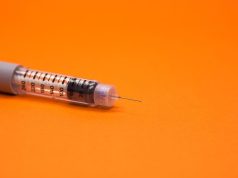Tool included 19 variables and had good predictive accuracy, identifying those who did not qualify for palivizumab
By Elana Gotkine HealthDay Reporter
THURSDAY, May 9, 2024 (HealthDay News) — A personalized tool can predict infants at increased risk for severe respiratory syncytial virus (RSV) lower respiratory tract infection (LRTI) who would benefit most from RSV prevention products, according to a study published in the March issue of the Open Forum Infectious Diseases.
Brittney M. Snyder, Ph.D., from Vanderbilt University Medical Center in Nashville, Tennessee, and colleagues conducted a population-based birth cohort study of infants born from 1995 to 2007 to develop and internally validate a personalized risk prediction tool for use among all newborns. The tool utilizes readily available birth/postnatal data to predict RSV LRTI requiring intensive care unit (ICU) admission.
The researchers found that 0.2 percent of the 429,365 infants had severe RSV LRTI requiring ICU admission, at a median age of 66 days. The tool included 19 variables and demonstrated good predictive accuracy (area under the curve, 0.78). The tool identified infants who did not qualify for palivizumab but who had higher predicted risk levels than infants who did qualify (27 percent of noneligible infants with >0.16 percent predicted probabilities).
“RSV-associated hospitalizations requiring ICU-level care results in significant morbidity and identifies infants at highest risk of death. In a rapidly changing era of RSV prevention, this risk prediction tool is a first step in identifying infants in the general population who might benefit most from RSV immunoprophylaxis,” the authors write.
Several authors disclosed ties to the pharmaceutical industry.
Copyright © 2024 HealthDay. All rights reserved.








